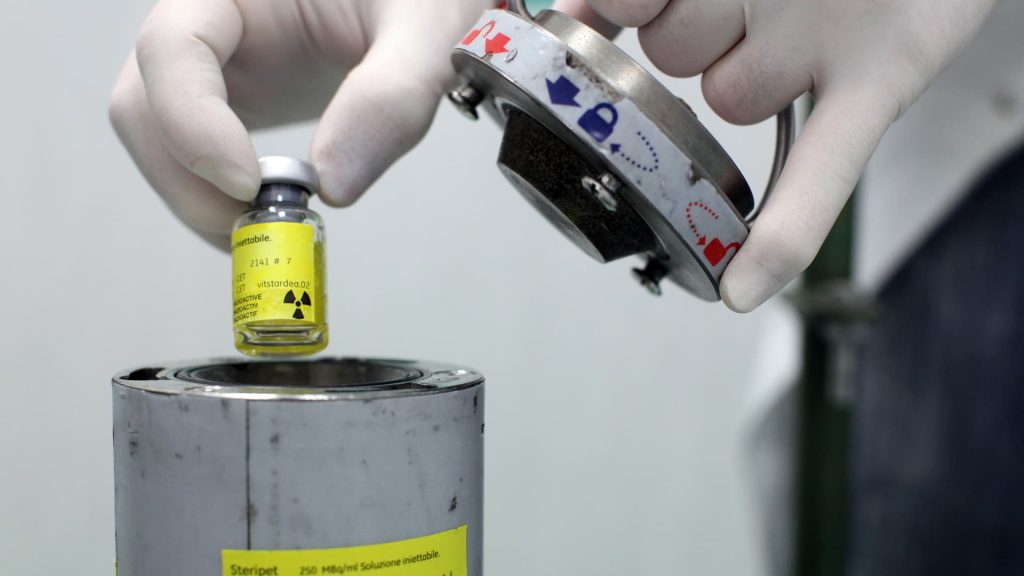The pharmaceutical industry is investing heavily in developing radiopharmaceuticals as a potential breakthrough in cancer treatment. Companies like Bristol Myers Squibb, AstraZeneca, and Eli Lilly have made significant acquisitions in this space. Radiopharmaceuticals involve attaching radioactive material to a targeting molecule that seeks out and attaches to specific markers on cancer cells, delivering radiation directly to the cancer cells while sparing healthy tissues. Novartis has already launched two radiopharmaceuticals with more in development, and the market potential could range from $5 billion to tens of billions of dollars if the technology proves effective in treating various types of cancer.
Despite the scientific and financial potential of radiopharmaceuticals, there are significant challenges in manufacturing and logistics. The radioactive material used in these drugs degrades quickly, so patients need to be treated soon after production. Novartis has shown success in this area with its radiopharmaceuticals Lutathera and Pluvicto, which are expected to generate billions in revenue by 2027. This success has led to increased interest in radiopharmaceuticals from other pharmaceutical companies, who are now making deals and acquisitions in this area to advance their oncology portfolios.
Manufacturing and distribution are crucial considerations in the development of radiopharmaceuticals. Eli Lilly, Bristol Myers Squibb, and Novartis have made significant investments in manufacturing sites and infrastructure to support the production and distribution of these complex drugs. Patients receiving radiopharmaceutical treatments need specialized care, including upgrading medical licenses to handle radioactive materials, and taking precautions to minimize radiation exposure to others. Despite these challenges, patients like Ronald Coy, who has seen positive results from radiopharmaceutical treatment, are willing to endure inconveniences for the potential benefits of fighting cancer.
The long-term potential of radiopharmaceuticals in treating a broad range of cancers is still uncertain, and many experimental drugs are in early development stages. Companies like AstraZeneca and Bristol Myers Squibb are exploring the possibility of combining radiopharmaceuticals with other cancer treatments like immunotherapy to enhance effectiveness. While Novartis has shown early success with its radiopharmaceuticals, the broader field still needs to prove the efficacy and safety of other drugs using different types of radioactive material.
The pharmaceutical industry sees radiopharmaceuticals as a promising new frontier in cancer treatment, with the potential to revolutionize care for a wide range of cancers. With ongoing investments in manufacturing capabilities and distribution infrastructure, companies are positioning themselves to capitalize on the expanding market for radiopharmaceuticals. Patients like Ronald Coy, who have experienced positive results from radiopharmaceutical treatments, provide hope and encouragement to pharmaceutical companies investing in this technology. The true impact of radiopharmaceuticals in cancer care will become clearer in the coming years as more drugs are developed and tested.















